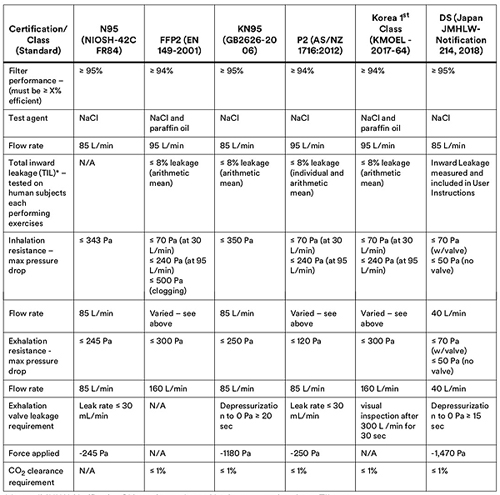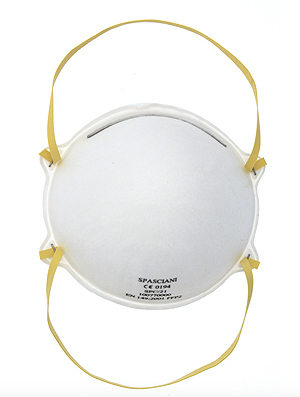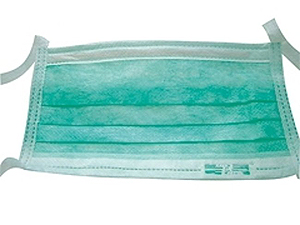|
|
|
||||
|
Respirators vs Surgical Masks
by Bob Giblett The main difference between a respirator and a surgical mask is the intended use. Respirators are designed to help reduce the wearer’s respiratory exposure to airborne contaminants such as particles that are small enough to be inhaled - particles less than 100 microns (µm) in size. This includes airborne particles that may contain biological material, e.g. mold, Bacillus anthracis, Mycobacterium tuberculosis, the virus that causes Severe Acute Respiratory Syndrome (SARS: COVID-19 included), Avian Flu, Ebola Virus etc. or even PM2.5 / PM10. Surgical masks on the other hand do not have either adequate filtering or fitting attributes to provide respiratory protection for the wearer. They are designed to help prevent contamination of the work environment or sterile field from large particles generated by the wearer (e.g. spit, mucous). Surgical masks may also be used to help reduce the risk of splashes or sprays of blood, body fluids, secretions and excretions from reaching the wearer’s mouth and nose.Different Respirator standards In the USA, respiratory protection masks are made to either the N95 or N99 standard. In the EU, they approximate equivalent to these standards are:
·
-
EN 149: 2001 FFP2 (94% filter performance)
The standard of mask recommended for Nail Technicians is N95 Product labelling
FFP respirators are considered Personal Protective Equipment (PPE). Here is the notice that should appear on every respirator:
Where to buy genuine surgical masks and respirators?
Ideally, these should be manufactured in the UK/EU or USA, or
manufactured elsewhere by companies whose head office is in one of
these countries (i.e. 3M has a factory in the Philippines). FFP2 with or without valve? Respirators are available in several styles; standard or a folded type that needs to be opened prior to fitting. You also have the choice of respirators with or without a valve. The valve type are more expensive, but make inhalation and exhalation easier. What about Clients?
A surgical mask or cloth mask is acceptable for salon clients in
those countries that have now opened their nail salons. Research in
the USA suggests that even a cloth mask can reduce the spread of
aerosol sized droplets from breath, sneezing or coughing by up Why have prices massively increased?
Factories that produce genuine surgical masks and respirators are swamped by demand with orders from governments around the World. Governments are even out-bidding each other, which has helped to increase prices.
Lower prices are possible in the future Earlier this month the German government issued licences to 50 companies allowing them to manufacture respirators. Germany is also the only country in Europe that has factories producing meltblown. The government has guaranteed respirator prices for 2 years and is aiming to produce 9 Billion respirators per year. This can have the effect of reducing prices in the market. In some countries, surgical masks are now being given to the public free or sold at a controlled price through Chemists and supermarkets. We are also seeing some supermarkets and online fashion webshops in Germany that are now selling cloth masks at low prices or with interesting fashion designs. Respirator fitting, removal and disposal Leaning how to wear a respirator or surgical mask is very important to avoid leakage and increasing the risk of infection. It is equally important that you remove the respirator or mask correctly to avoid transferring external contamination to your face or hands. You can find tutorials online.
FFP2 respirators should ideally be replaced after each client, but
that will be prohibitively expensive for most salons. The problem
for Nail Technicians is that it is impossible to know if their last
client was infected and not displaying symptoms yet or asymptomatic.
Which means that you don’t know if the mask has become contaminated.
Hopefully the government will provide advice on when these should be
replaced. Authors
Iryna and Bob Giblett are co-owners of IKON.IQ Nails Ltd, a German/Swedish manufacturer of award-winning hypoallergenic professional nail products that deliver a competition-level performance.
|
|
||||



